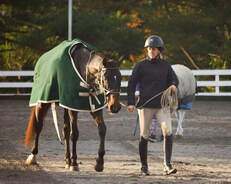 Static: lacking in movement, action, or change, especially in a way viewed as undesirable or uninteresting. I was talking to a friend this evening about, what else… horse training. She’s a teacher by trade and is also one of my instructors at the farm. I wanted her to know how well she was doing; how much detail she was putting into her lessons, but in a very simplistic way so her students could understand and thrive! She then thanked me for allowing her to always learn. And my retort: I’m just the messenger. What do I mean by that? I am always learning. I try to learn as much as I can, whenever I can! Don’t get me wrong, I’m very careful and conscientious about who I chose to learn from. But, I am always wanting to learn more. I want details; the what, then when and the why. I can be annoying about it but that’s because I always want to improve. If I am willing to put myself out there and take constructive criticism, then my horses, clients and my business will benefit immensely! And if the things I learned work, then I go back for more!! What’s my point? We don’t know everything. If you haven’t taken a lesson in more than a year, you are not helping your horse or yourself. And if you are a trainer, you are not helping your clients or your business! In the past five or six years, I’ve taken lessons from four different trainers; all of which I’ve learned a great deal from. I take different aspects of each lesson and apply it when I need it. I also allow my students to lesson with the person I am lessoning with if they are ready. If they are not ready, they are always welcome to come watch and learn. Why not, right? It’s a fact in the horse world, all of our clients are fluid - they are all leaving at some point. So, then work as though you aren’t afraid to lose them. If I’m afraid to lose them, then they are definitely leaving anyway! But, if I give them reasons to stay, like access to amazing educational opportunities and reach their goals in the process, they aren’t going to want to leave. Now, some clients are never happy and will leave even if you give them the world. So, why not work for improvement and bettering myself so clients stay happy and continue to learn as well! My friend said to me “if you aren’t willing to continue to learn and grow, you should retire”. I agree with that 100%. Keep learning…. From the Ground Up!
0 Comments
It’s obvious this guy has some trauma. But, at the same time, he’s a pretty sensitive and reactive guy. So, how much of it is new and how much of it is his personality. After just a few days of working with him I’ve determined that the “unwanted behavior”, not allowing anything to touch him without shaking and trying to bite it, is learned. It’s not a sensory behavior that cannot be fixed. Here’s why: he’s fine with being brushed, he’s fine with being hosed off in the wash stall. Likewise, he doesn’t overreact when a fly lands on him. The most important part… he doesn’t just react when I actually put a rope or something on him, he still reacts when I go through the “motion” of putting something on him and not actually following through; as if I were going to throw the rope but don’t actually let it go.
Horse training is a lot of “best practice”, but also involves a lot of trial and error and thinking outside the box. My idea day one was to push him a little and see if I could mentally and physically exhaust him to make the behavior become less of an issue. But, by day two, he was pretty relaxed with the ground work so pushing him from the start would have been unnecessary and done nothing but give him more anxiety. So, instead, if I put the rope on him and he has an unwanted response, I would move his feet with purpose as opposed to working him first, then allow him to relax and try again. This was working. By day three, I was seeing steady improvement. First going through the motion of throwing the rope, then actually throwing the rope. There were times he didn’t anticipate and didn’t shake. He also started yawning and standing with a relaxed, calm look in his eye. We are making progress!! With a horse like this, when their brain can’t slow down, we have to slow things down for them! Allow them to lean in a relaxed manner. The saying “slow and steady wins the race” is very true when training horses. I will continue to keep Nico learning. Stay tuned while we work…From the Ground Up! 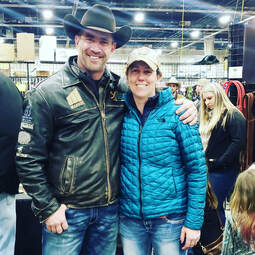 Why train horses? I like the challenge. Can I get this done? Can I make this horse better? I am very competitive, but It’s not me against the horse, or me against me. It’s just about wanting to improve on what I know and see if I can implement it to help make horse better than when it started with me. I work with a lot of different horses; different breeds, different disciplines and different issues, non-issues and so on. The toughest horse I’ve ever worked with was a 7yo paint gelding who had never been touched, and he was fearful. He had to be loaded into the trailer much like a wild mustang would be, 6' mental round pen panels made into a chute. How I fell into this particular type of training, I honestly don’t know. During my time learning from John Lyons and Josh Lyons, we did a lot of problem solving as well as learning how a horse moves, why they move the way they do, how they think and how to think ahead of the situation. The style of training allowed me to grow my toolbox and gave me the confidence to think outside the box and problem solve, We also learned the detailed process of starting and finishing horse. I guess you could say we ran the gamut. But, for some reason, problem horses just became my bag. I do get young horses in my barn to bring along, as well as sale horses, but those are a smaller portion of my clientele. I am typically introduced to a client because they need to get their horse back on track, or it may be a little tougher to start. Most recently, I was approached by a new client with an 11yo Morgan gelding. She bred him and has had him his entire life. He’s shown extensively, has given lessons… basically has done a bit of everything and well! So, what’s the problem? I try to get the whole story when I’m meeting a new client. How old is the horse? How long have you owned him/her? What behavior are you uncomfortable with? When did the behavior start? And the most important question… have you had a vet evaluate the horse to eliminate and pain related responses? After we talk, or after I let the client tell me all about their horse, I work with him/her to see if they display any of the behaviors the client discussed. I can generally tell in a short time what the problem is and how to fix it. Likewise, I can usually tell fairly quickly if the horse will respond to the training. The one thing I don’t typically know is how long it will take. That’s up to the horse; the one thing I have absolutely no control over. Don’t get me wrong, I can push and get results, but how long it takes to stick is up to the horse. With 16 years experience, I do have a pretty deep toolbox. But, there are times where I have limited experience or limited knowledge. The problem that this 11yo Morgan has… I have never seen anything like it and I don’t know if I will be able to fix it. I do have ideas on how to approach it, but I won’t know until I try. I have to really reach outside the box on this one. So, what is the horse doing? Basically, anything that touches him causes him to react in an aggressive way towards the object and the handler. He will shake his body, and eventually reach around and try to bite it off, likewise, he will try to throw his shoulder at the handler and try to bite the handler. And when I say anything… I mean even the reins over his neck. During the initial evaluation, I met the horse while he was standing calmly on the cross ties. I listened to the owner's story and my initial thought was ‘it can’t be that bad, he’s standing pretty quietly now’. After we talked, I wanted to work with him a bit, so I had the owner put the bridle on. I didn't want her to put the reins over his neck until we got outside for safety reasons. We took him to the outdoor and I wanted to get right to it to see what his reaction would be. I put the lunge line on him, put the reins over his head just behind his ears, then tied them up under his throat latch. I then slid the reins down his neck and sent him out on the lunge… she was right, he freaked out; shaking, coming towards me with his shoulder and eventually turning to bite at the reins… I’ve never seen anything like this. And it basically happened overnight. Two vet opinions, blood work, xrays… nothing. Nothing except… instead of shipping him to the indoor without the saddle, the owner decided to ship him saddled with a cooler in 20 degree weather. After that it went down hill fast. I don’t think the owner did anything wrong by shipping him saddled or with a cooler. So, the horse was not handled inappropriately. Over the next several weeks, I will be continuing to work with the gelding at my farm to see if I can get to the bottom of it and help this horse get back to normal. I’ll continue to write blogs to keep you all in the loop. I’ll take it one step at a time, and start…From The Ground Up. 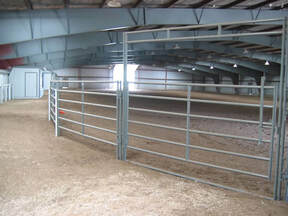 My client was from Wheatland, WY. She was barrel racer who bred high-end barrel horses. They typically bred to a stallion named Frenchman’s Guy; a quarter horse known for his speed, agility and trainability. He’s everything you want in a barrel horse. In the barrel world, he’s royalty. The first horse they brought to me was their 4-year-old mare that was going to be the daughter’s barrel prospect. Impeccably bred and had the brain for the discipline - quiet and trainable. But she had one major issue. She wouldn’t stop bucking; as soon as they put the saddle on her, she’d go for a good 5 to 10 minutes...then stop, standing stiff as a board, then blow again. This was 10 plus years ago and I wasn’t keen on, not educated enough to check for medical issues. I just trained the horse for what I saw in front of me. And this one had a major problem. How did the problem start? I can’t blame it on one particular thing but I’m going to put my money on what I believed, at the time, to be the culprit. They took her to a 3-day colt-starting clinic about three months prior. To say I’m not a fan is an understatement. In fact, I don’t see many around anymore. My trainer, Josh Lyons, is the king of starting horses in a few short days. In fact, he won “Road To The Horse” several years back; competing against the worlds best colt starters. But...even he doesn’t do colt starting clinics. Never has. Some horses can handle three days of non-stop information that they can hardly process; some being very, very few. Let’s just say most cannot. And likewise, most owners don’t have the knowledge to teach it correctly in a few short days. Overall, it’s a bad mix. Starting a horse is the most important aspect of horse training. It can truly make or break (no pun intended) a horse and his/her career. A horse with amazing natural talent is great, but if they won’t accept, or don’t trust, a rider then they are not going to succeed. Laying a foundation that builds your horse’s confidence is vital. That said... this mare was a mess, to put it kindly. She was super quiet on the ground, but the minute she knew that saddle was coming, it was over. She wouldn’t stand still for me to put it on, let alone try to cinch her up. The owner was great, and very realistic. They knew they had a major problem and gave me as much time as I needed. At the time I didn’t know it, but the fact that the owner gave me endless time really took the pressure off me and the horse; it allowed me to go at the horse’s pace. I started her in the round pen; just basic ground work and desensitization. Inside and outside turns, ropes, bags; she didn’t really react like I thought she would based on what they told me about the saddle. I thought sacking her out would make a huge difference. But it was minimal. After about 10 days of that, I started working with the saddle. My first attempt, I had her bridle on and a lead rope attached. She moved in circles while I tried to put the saddle on her. For 10 minutes we went round and round until she stood. I was so set on getting it on her that first day I worked quick, cinched it up as tight as I could while holding onto the lead rope with a death grip because I knew she was going to blow... off I sent her. Boy did she buck... like a NFR (National Finals Rodeo) bronk horse, high and tight, one after the other; once around the round pen, twice, three times... it felt like a half hour, then... she stopped dead! And I mean dead. That only meant one thing... she was going to blow again if I moved her or the saddle. So, I did what any reasonable person would, sent her forward, away from me, hoping she just needed to keep getting the bucks out and she’d be ok. We repeated this two more times before she trotted out and was comfortable with the saddle. We tried again the next day mmm and basically got the same response. Saddling day three: same. Day four: same. Day five, six and seven....bucking for days. It was probably about two weeks into saddling that I finally realized she wasn’t happy doing things my way and that I had missed something vital. I had started countless horses this way and it has always worked. Until this mare; it wasn’t working for her. She needed a different approach. I had to figure out what her way was. So, I backtracked... week one review, week two review. I then realized it wasn’t any one thing. It was all the things.... putting the saddle on, adjusting it to sit right on her back, letting down the latigo on the off side, bringing the cinch under to tighten it in the left side. That was the point in her training that needed to be addressed... and probably many things after that as well. For the next three or four days I just put the saddle on and off, on and off, on both sides until she stood relaxed. That’s was the key, relaxed. If she wasn’t relaxed, I wasn’t ready to move on. Next, I remember it vividly, wiggling the saddle while it sat on her back, uncinched... for days. Next, slapping the cinch against her girth area on both sides, again for days until she didn’t react; until I could cinch up the saddle and have her stand still relaxed. After that, I finally asked her to walk off... and She. Didn’t. Buck. That was it, I figured it out... I did it her way and figured it out! I owe that mare a world of gratitude; She was one of the first horses that taught me how to train a horse. That...Every. Single. Horse. Is. Different. They all need to go at their own pace and what I am doing isn’t and shouldn’t be standard for every horse. The owner came to visit about three weeks later and I was just about to start riding her. We had come so far! I said “My way didn’t work. She needed me to back off and do it her way....” She was with me a total of four months and we were walking and trotting under saddle when she went home. A great turnaround for a horse that wouldn’t stop bucking. When the owner came to pick her up, she said that she remembered what I said about needing to do it the horse’s way; she said that really stuck with her. And from that day forward, it stuck with me too. It’s never about how fast you can get it done, it’s always about how you can get it done so the horse understands it and has confidence doing it. That’s the day I learned the meaning of training a horse...from the ground up! 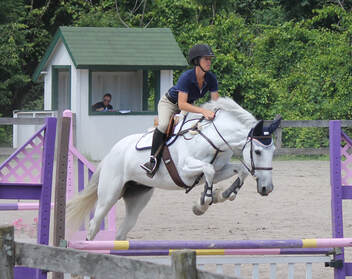 I was driving on the Pennsylvania Turnpike heading home from a client’s farm this morning. I had the radio on, listening to “Can’t Help Falling in Love”; it was an Elvis remake. I was struck in that moment; my life became very small. I’m watching all these cars on the highway, like a scene out of a movie. All these people have different agendas, they are all going to different places; changing lanes like a puzzle pieces fitting together. Where are they actually going? And in the grand scheme of life, how much does it even matter? Ok... I’ll stop with that philosophical riffs; and you’re probably wondering how this has anything to do with horses? It doesn’t... but sometimes it helps to be humbled. If I wanted to get philosophical about horses, I’d say we can’t. With horses, it’s pretty black and white. Horses don’t have the cognitive ability to think philosophically. They don’t have the ability to analyze; their reaction is driven by self defense; Act or react. And they do all this with the mind equivalent to that of a three-year-old child. Yes they’re big and yes they’re strong; but they have no idea that they are. Now, I’m not a scientist and I don’t have a degree in animal behavior. But, I do have an education that allows me to understand problem horses and I have worked with hundreds of horses that have had strong behavioral issues; bucking, biting, charging, refusing, no forward, striking, kicking, rearing, feral... what else is there. All of these behaviors are a product of one two ideals: that’s what they do because that’s what they were taught - or - that’s what they do to defend themselves. So, then why would a horse buck if they have kissing spine? - because they are trying to defend themselves from back pain. Why would a baby horse strike out at you if you are trying to pick up a foot? - because when horses play they grab legs with their mouths; if your horse doesn’t understand what you are asking, he will try to defend himself. When I was at my certification in 2006, I remember John saying, “all horses want to be doing is be in a pasture eating grass”. Everything we do with them is not natural. Horses have to be taught everything we do with them. What a halter is, what leading means, how to pick up their feet. Wild horses do none of this; they walk up between 10 and 20 miles a day searching for food and water. Now, let’s take a step back. I’m not saying we let our horses live like they are wild, we have done a lot of domesticating. We have turned horses into pets that rely on us for everything. So, in order to co-exist, they and we, have to learn parameters through which we can interact. In that dynamic, we, the humans, are in charge. I don’t say that in a derogatory sense. But, we do have to have control for safety; we are the more cognitive species. So, how does this all relate to training. If you recall in my blog “Don’t be So Emotional”, I talked about physical communication. Horses learn by body language, not by voice. They learn through repetitive cues, not 100’s of times, but 1000’s of times of being asked the same cue and giving the same response. Once they learn this response, they never for get it. Sort of like when we were kids and we were so impressionable; like sponges, we never forgot. That’s why therapy is so popular today. Well, you can call me your horse’s therapist. So back to where are we all actually going? The horse industry as a whole is always in a rush. Horses are being started younger and younger, being asked to do more at a young age. Is there a world award for the best trained young horse? No! So why are we in such a hurry? In the reining world, horses are at futurities at age 3, which means they are being started at 18 months. In the hunter jumper world, once a horse gets past age 6, it should be doing 3’3” or 3’6”. But why? Brunello, owned by Liza Boyd and Janet Peterson was 18 years young when he won USEF Horse of the Year in 2014. That should be the standard, but it’s not. The pressure is real. But the horses are the ones who suffer. The throw away’s, the ones who are pushed when young and don’t make it, are sent away because trainer egos don’t want someone else to be successful with a horse they didn’t get along with. How do we stop the cycle? Create accountability with organizations that want the horse to be successful. The hot topic now is that USEF, the preverbal backbone of the horse industry in the United States, is facing a well-deserved back-lash at the moment for sighting safety issues at World Equestrian Center Ocala. They have since withdrawn all licensing for shows at that venue. But what’s the real reason? The National Snaffle Bit Association (NSBA) is also sanctioning those shows. The NSBA has an impeccable reputation with regard to putting the horse first; USEF, not so much. USEF is more about money, high show fees, high membership fees, horse fees, name change fees, licensing fees, and creating programs for the minority, not the majority. So where am I going with all this? Be humble. Your horse relies on you to make good decisions for him or her. Don’t be in a rush, because where are we actually going? The only think that is going make you accountable is yourself. Give your horse the best possible chance to be happy and successful. If it were your human kid, you would give it everything. Horses and animals don’t have a voice. I’m not preaching. But I am saying, slow down, take a breath and make sure you are doing it right... From the Ground Up. 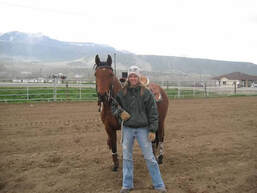 I may seem pretty chill on the outside, but I’m a pretty emotional person. Ask any of my close friends, I’m insecure and kinda introverted; I watch and learn. Like I said, That might sound contradictory to what you see on the outside, but it’s true. Most people that are any good at anything are usually insecure, but they can also be inwardly confident. You’d never hear us say anything boastful out loud though, because if we do and screw up, it’s emotionally disastrous. We usually hide the confidence; the more important aspect of all this is that we don’t make mistakes. In fact, we’re afraid to make mistakes because if we do it equates to a lack of success or a lack of knowledge; and in the final twist all this insecurity and confidence...that what drives us. Did you get all that... because when training horses, none of those attributes are helpful. The key to success with training horses is to be emotionless; not insecure, not overly confident, not sad, not mad - NOTHING. No emotion. Blank. Indifferent. Phlegmatic. Like humans, horses are, in fact, emotional animals, but in a physical way; not like humans. Horses display their emotions through actions; pinning their ears, kicking, striking, chewing, yawning, through their eyes, etc. So when training horses, somatic, or physical, emotion is more effective. Therefore, human actions like screaming, yelling, getting mad or frustrated do not translate to horses like they do to people. It’s our body language that gets their attention. As an emotional person, it took me years to learn the physical language of horses; but I studied hard. Whenever I train a horse, I told talk to them. I watch and learn. The things I always look for are 1) what are their ears doing? Are they moving towards me and listening or away and focusing on something else. 2) What are their eyes doing? Are they looking at me, are they blinking are they soft or not wide open. 3) What are they doing with their head? Is it high or low. 4) What is the posture of their body? Are they relaxed or stiff or rigid. 5) Are they standing quietly or are they fidgeting and unable to stand still. All of these are examples of how horses emote. There wasn’t one horse that taught me this... it was hundreds of horses and thousands of hours, experimenting with cues and getting responses; responses I didn’t want and responses I did. The most important takeaway is that horses respond better to an unemotional “trainer”, one that gives consistent and calm cues minute after minute, hour after hour, day after day. A trainer that is in a hurry, that is mad, yells or is forceful and not consistent will have less much success, or none at all. The one thing I stress to my clients when they are working with their horse is be relaxed and consistent; give the cue in the same calm manner Every. Single. Time. You. Ask! And if you have to teach it 1000 times, then teach it 1000 times, because that’s how long it’s going to take. And that’s ok because once your horse learns it, I guarantee your horse will never forget it. He will remember everything... from the ground up. 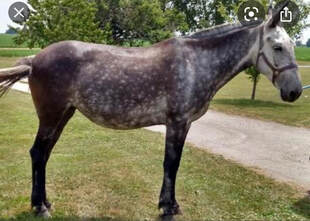 She was beautiful. The most beautiful grey I’ve ever seen; dapples for miles and the color of steel sprinkled throughout her coat. I never knew a mule could look like that. Her owner was a guy from Cody; he wanted her to hunt and pack in the back country. Bell was about 15.2; the perfect size. He dropped her off and asked if I could get her broke in two weeks. Ummm...ok. He said he’d already had her saddle broke, so getting on was all that was left. I still had no idea how to say ‘I can’t do that in that amount of time’. I was just taking whatever work I could get and made sure I worked hard to make it happen. But, this time was different. When he dropped her off, he left her halter on. I didn’t think anything of it. I was running through the schedule and making sure he understood my plan. Tim and I fed a little later that night so I could check on the new horses and mules that came in that month. Bell seemed to settle in just fine. The next morning I came out to start working horses and mules and I always gravitated towards the new ones that I felt were the biggest challenge. Bell was first on the list. Could I get this mule started in two weeks? Her paddock was a 12’x12’ shed with a run coming off of it that was about 20 feet long. There was plenty of space for Bell to move around, and I’d be working her 6 days a week. I went in and started walking up to her and she immediately darted to the far corner. Hmmm... I tried again; same result. I couldn’t get within 10 feet of her. My first thought, ‘so this is how we are going to start off’. I noticed she had a little nubby lead rope tied hard to her halter. After about 20 minutes, yes 20, I was finally able to get close enough to her to grab the nubby. Wow, was this guy for real? Session one in the round pen was much of the same. Thank god for round pens... I worked on moving her feet and was just trying to get her to trust me enough to just look at me. The next few sessions, I didn’t even bother trying to catch her first. I just herded her into the round pen through a chute. By the end if the first week, I only had her looking at me and I was able to walk up to her a little more than half way before she would turn and take off. She was terrified. This is not normal behavior for a confident and well treated animal. It was going to take a lot to gain her trust. The next two weeks, I worked on just that - trust. I’d move her feet methodically; inside turns, outside turns, turn and face, come to you cue. No response - push her forward and start again. Most of it was her standing and staring at me, me at her and me walking towards and away from her a million times until she trusted I wouldn’t hurt her. I would get frustrated because I thought I was being patient, but it was too fast for Bell. Day 2, 3, 4.... 10 - same thing, push her, back off, push harder, back off, go slower, back off... which was the right answer? I finally got her to trust me enough to put a lead rope on her, a real one. Then, the slightest movement and she’d take off, dragging me across the round pen. I went sand surfing a lot with Bell. One thing I quickly learned about mules, if they take off and you let go, they will keep trying to get away; you can never let go of a mule. By the end of two weeks, I could catch her and lead her into and out if the round pen with no issues. It was time for the owner to see her progress. He came to the farm and I went into Bell’s pen. I’d been putting her lead rope on very easily the last two or three days. The day her owner came, she took off. I was confused but just thought it was a minor set back, which can happen. I finally caught her, put her lead rope on and took her to the round pen. I was so happy with her progress thus far. I was sure to tell her owner how important gaining her trust was in order for her to be safely ridden. I worked her and she did great; calm and confident. I asked if he wanted to try what I had been doing. He went into the round pen... and I was shocked and saddened by what I saw. The instant he walked towards Bell and she heard his voice she bolted to the other side of the round pen and began trotting back and forth, trying to get away. Again, I immediately felt sadness. I asked him how he was able to get her saddled and bridled so easily... he said “oh she’s a pain in the ass. I just rope her and tie her up and throw her on the ground. I let her up after she is saddled”. At that very moment, my mind was made up. I asked him if he really wanted her. He said he’d let her go for the right price. I asked how much, ran in the house and got a check. I bought her on the spot for $400. She never left my farm again. I couldn’t in good conscience let her go back to that. I finally realized she was bullied and treated so inhumainly that she had absolutely no trust in humans. Now, I had all the time in the world to teach Bell to trust. All the time to teach her.... From the Ground Up. 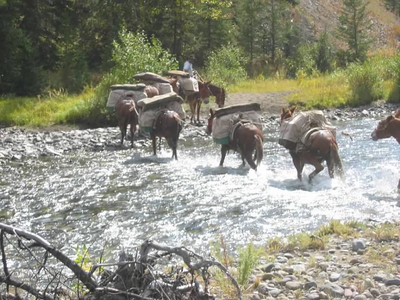 In 2006, I was living in Parachute, CO studying to become a John Lyons Certified Trainer. From April to November, I was soaking up all that John and his son Josh could teach. There were eight of us at "Cert" during that time; Shantell, Carissa, Makayla, Wayne, Louis, Tim, Laura, and myself. Tim...Doud was a nice guy; I didn’t know much about him other than he was a mule trainer and outfitter from Cody, Wyoming. We were both at the certification program since April but didn’t talk much until August. I was pretty focused on learning this new trade. One morning, we were all out to breakfast before class. I was totally surprised that a guy as gruff as he was an outfitter... “what kind of clothes do you make?”, I asked. Obviously, my naïveté had taken over and everyone laughed. I was east coast all the way, and the only English rider for miles. I quickly learned that Outfitters are big game (Elk, Moose, Big Horn Sheep, Black Bear) hunting and trail guides that take individuals and families on pack trips into the national forest and wilderness. I had no idea…Wilderness…was that the even possible?! Needless to say, we talked more and more after that. Almost every day. I was even able to go up to drive five hours up to Cody while we were on a two-week break from “Cert” to take one of those pack trips into the Washakie Wilderness. The Washakie boarders Yellowstone National Park, which covers the northwest corner of Wyoming and also crosses the continental divide. It’s was so breathtaking and very humbling; gorgeous scenery, beautiful blue skies every day, and lots and lots of… mules? Tim actually bred mules and did a lot of mule training. He also used mules to pack all of the equipment and guests up to base camp, which was 22 miles from the nearest road and 66 miles from the nearest hospital. I couldn’t even grasp this concept, until I saw it for myself. The mules were the worker bees of the operation. They carried everything to base camp; food, tents, bed linens, the kitchen, the shower, extra tack, and so on. Tim would ride his lead mule Angel and pull a string of 10 mules behind him, all of which were tied nose to tail and packed with panniers full of supplies. These panniers were meticulously packed, weighed to the exactness of an ounce an paired with an equally weighted pannier, then mounted on a sawbuck saddle on the mule and tied with a diamond hitch so they would not fall off the mule during the 22 mile trek to base camp. Approximately 22 of these mules were pulled up to camp by four guides each week from August 1 to October 17 each year. The law in wilderness areas requires any visitors “leave no trace”. So, everything that is taken into he wilderness must be taken out. The mules typically logged 50 miles a week, 200 miles a month, and averaged 500 miles a season. I was starting to see that mules were pretty amazing animals that I previously knew nothing about. I also learned how versatile mules are. Not only did Tim use a lot of mules in his outfitting business, but he also bred them. He initially bred mules for his outfitting business, but then refined his breeding program to also produced mules that were used for racing, dressage, and western disciplines such as pleasure and ranch work. They were beautiful, but ai I soon learned they are also smart and hard to train. Mistakes were disastrous because mules remember everything. And a nervous or scared mule will push your training abilities to the limit, whether you like it or not. The saying goes "a good mule is 10x better than a horse, and a bad mule is 10x worse than a horse". A lack of patience is a mule trainer’s demise. Are mules harder to train than horses… Yes! After “cert” Tim and I kept in touch. Tim had a lot of work in Cody training mules. I had no work... In early 2007, I decided to join Tim in Wyoming to train some mules. I packed up my horses and drove across the country, planning to stay for just a few months and make a little money training mostly mules and honing my craft; but that timeline went out the window. I ended up staying for seven years, training mules and horses, helping run a mule breeding business, helping run an outfitting business and living in the Rodeo Capital of the World. Little did I know, my education had just begun. I was about to be thrown into the fire and really learn how to become a professional trainer… From the Ground Up.
Soccer became my outlet; I loved it. I was very competitive and my ego was big. I always had to be the best and that was the challenge I needed to work hard. I went on to play in college and eventually professionally for two seasons for the Delaware Genies. I tried to forge a career in soccer by coaching a lot of college and youth teams, but it wasn't enough to survive financially.
While I coached, I took a few corporate jobs: sales, sports reporter, then a research analyst at McGraw-Hill; none were fulfilling. I wanted something else that would challenge me and give me the possibility of a career. Corporate America wasn't it. In 2001, I had the urge to start working around horses again. I definitely missed it so, I looked in the yellow pages for horse farms in the area and found Mile View Farm in Doylestown, PA. I called and asked if they needed any help, even just cleaning stalls. I wasn't sure what would come of it, but it was something different. Hanne' bought Mile View just two years earlier; it was a fifty stall barn with horses everywhere. I was hired and was a horrible stall cleaner; I was told that for about two weeks, but I worked hard and that's what saved my job. A few months after starting, I began spending all my early mornings at the barn helping any way I could. It sucked me in pretty quickly. I didn't care how much I got paid, I just wanted to learn about all the things I never learned as a younger rider. How do horses interact? What was I doing when I rode? How do horses think? I became a sponge; probably an annoying one, actually. I asked a lot of questions and did anything and everything I could to learn more. I also started taking lessons again with a dressage trainer. I had no idea what dressage was, but I was so thrilled to be riding again. I was seen as the kid at the barn that might have a chance to get a horse one day, but I soon knew this was the only future I was going to have. I learned a lot in two short years. In 2003, I bought a horse; a baby no less. I bought him off a video tape. Yep! Back then we didn't have Facebook or text message videos. I would tell anyone today that it was a bad idea. He was a "leftover" for $2,000; an 18 month old TB by Viscount bred to be a show hunter, not for the track. Jedi was his name. He became my world. The first night he was at the barn, he rolled in a mud puddle. I went to the barn the next morning and was beside myself. Who dumped all this mud all over my horse. I couldn't believe someone would do that to a baby horse. I was clueless; I needed a lot of help to say the least. I decided to hire a local trainer, JR Rosenburger, who was recommended to me because he was good with baby horses. He was John Lyons Certified; John Lyons is "America's Most Trusted Horseman". I had no idea who that was or what that meant. But, JR was good with baby horses and that's all that mattered. JR came out once a week to teach me how to handle Jedi. That's all I could afford at the time. So, there I was, immersed in whatever it was I was learning. Move this, bend that, give here, give there. It made no sense......until it did. I practiced every day. I was once again a sponge; the more I learned, the more it made total sense. But I still knew nothing. A few years had passed, Jedi was now under saddle and he had been to a few shows. It was the summer of 2005 and JR got hurt. A horse he was training threw a buck and JR was pushed into the horn of the western saddle and he fractured his pelvis. He asked me if I wanted to help him with a few clients until he was able to ride again. I said yes, of course. I only worked with a few of his clients, but those next few months gave me the confidence to take the leap. In 2006, I quit my corporate job and moved to Parachute, Colorado. I spent six months in Parachute and learned so much from John and Josh Lyons; how to train a horse, how to read a horse's body language, how to think like a horse, how to respect a horse, and a million ways to problem solve. But I wasn't done learning. I never am...it wasn't until years later that I actually figured out how to put it all together. Fifteen years later, I get all types of horses in for training. Horses that aren't rideable, aren't trainable, aren't safe, horses that buck, that don't lunge properly, that don't load on the trailer, don't lead without taking off, don't pick up their feet for the farrier, are aggressive, refuse jumps, don't go forward under saddle, and so on. What I've learned is that I don't know everything. I don't do anything special with them. I don't have any magic recipe. I just take my time and give them a chance to learn. I look at their eye and make sure they understand, I watch their ears to make sure they are listening to me, I watch their head to make sure they are lowering it with confidence, I watch their breath to make sure they exhale. I hope you enjoy my blog. In future entries, I will talk about horses I have in training at my facility, previous examples of similar horses, experiences I've had with horses in the past and my life's adventures. I hope you enjoy it and I look forward to helping just one horse "from the ground up". |
Jessica ForlianoJessica Forliano is a John Lyons Certified Horse Trainer who specializes in Problem Solving and Starting horses under saddle. Archives
December 2021
CategoriesTraining Videos |
ServiceHorse Training
Natural Horsemanship John Lyons Certified Starting Horses Horseback Riding Lessons Problem Horses Horse Boarding Horse Farms Horse Shows |
JESSICA FORLIANO
Jessica Forliano is a John Lyons Certified Trainer specializing in Problem horses / behavioral issues and starting young horses and ponies under saddle. Her passion shows through the accomplishments of each of horse or pony she works with as they reach their potential in the show ring.
|
|
© COPYRIGHT 2019. ALL RIGHTS RESERVED
site design Mary Carol Sullivan
site design Mary Carol Sullivan
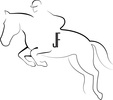
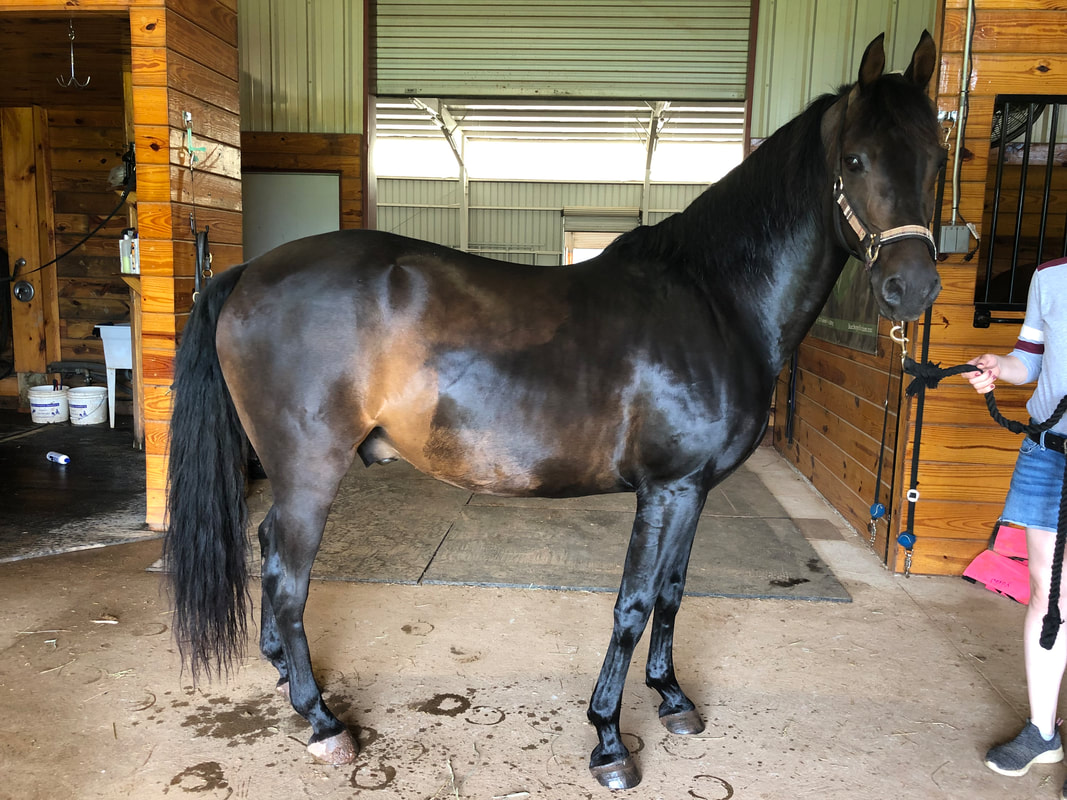
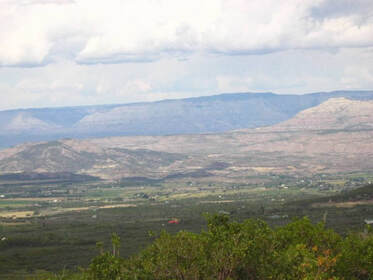
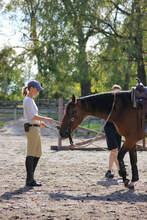
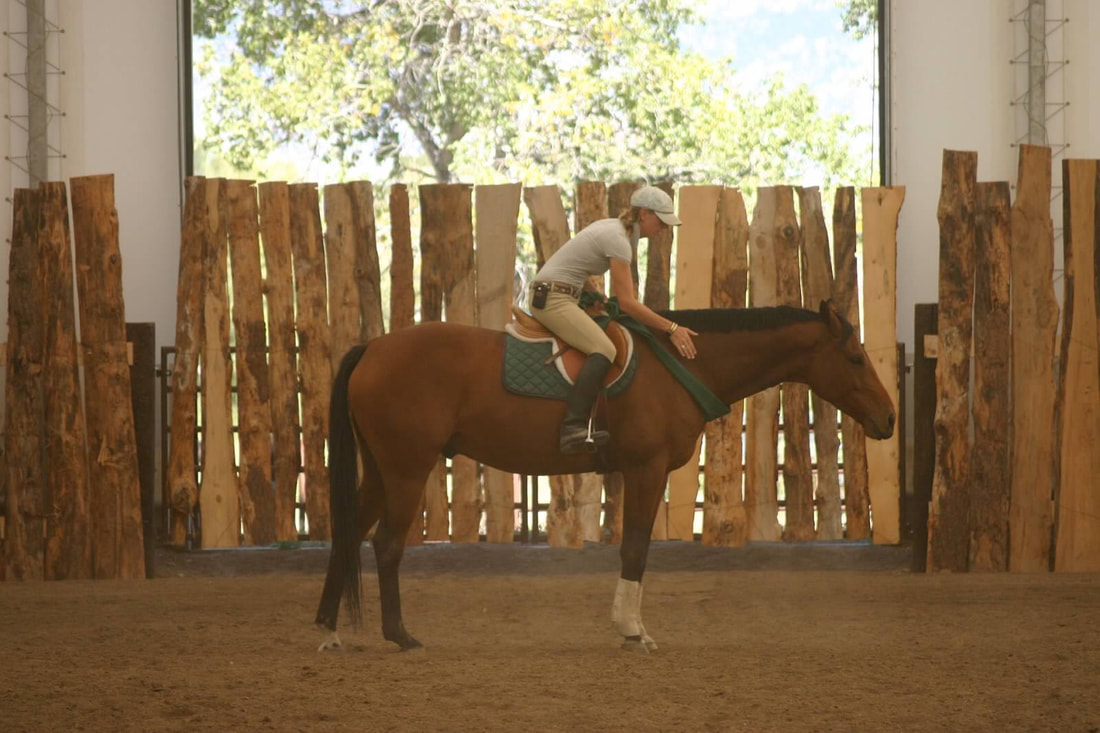
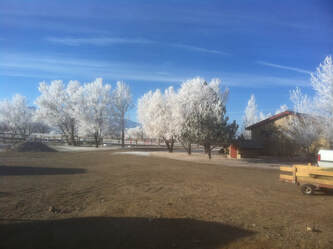
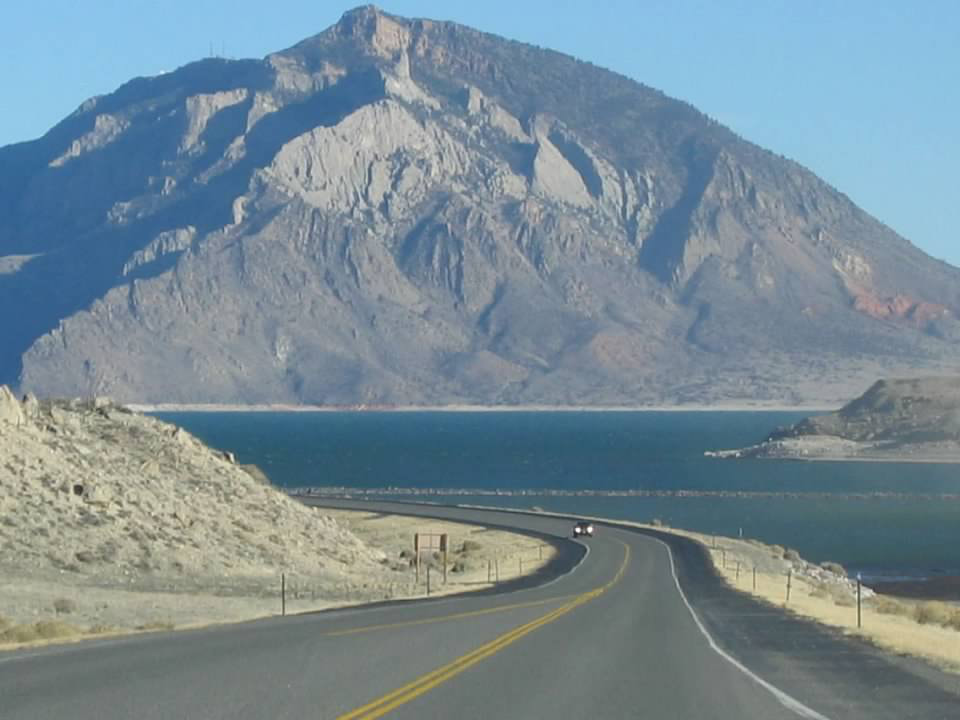
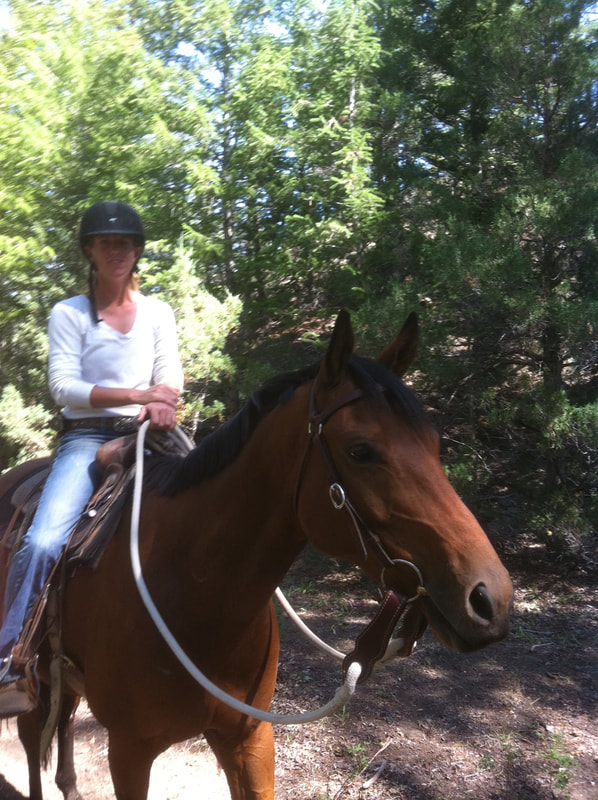
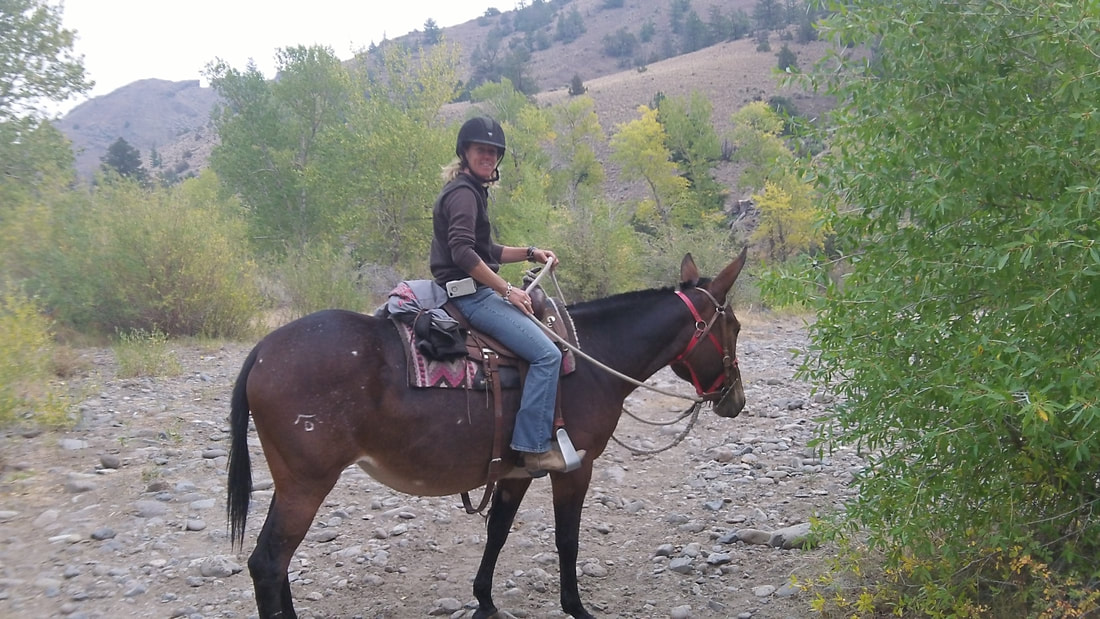
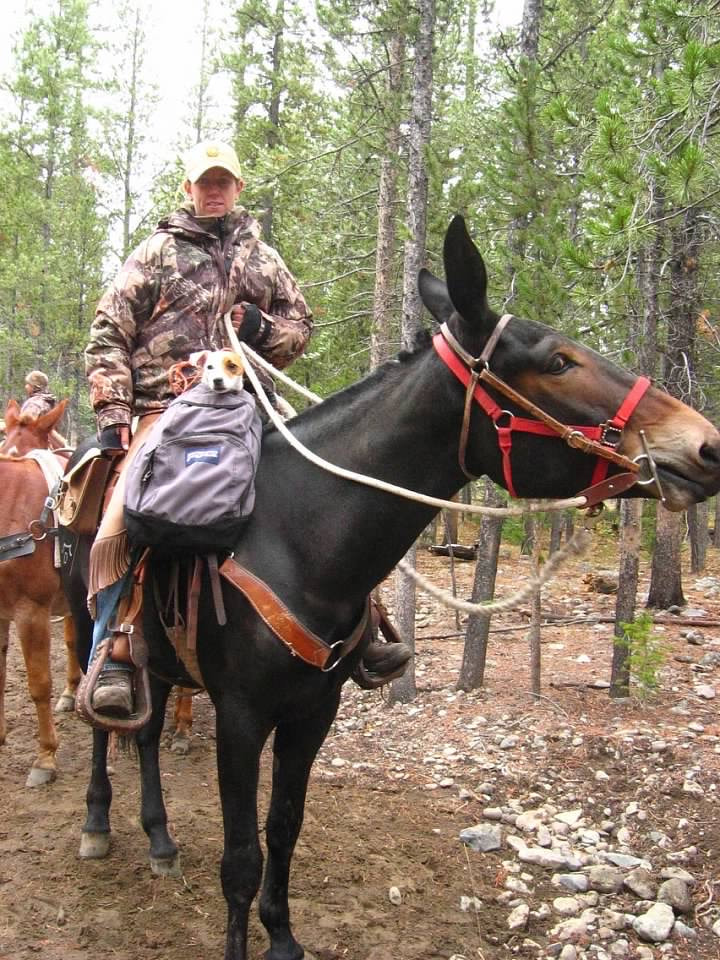
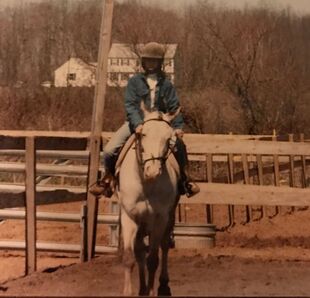
 RSS Feed
RSS Feed